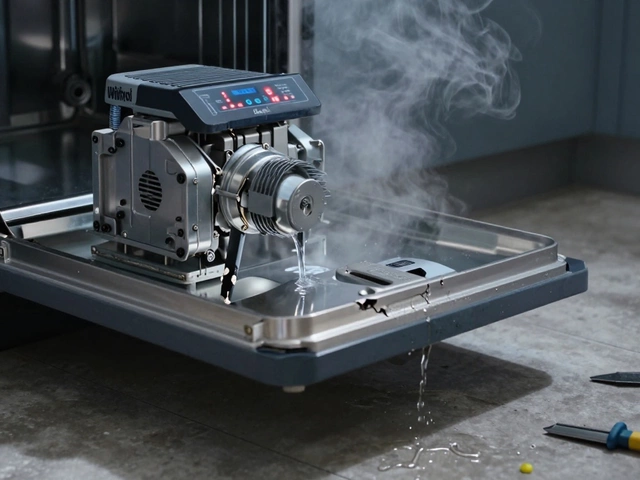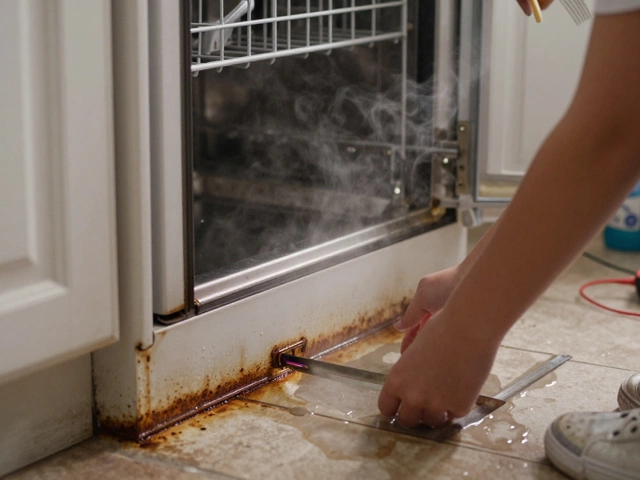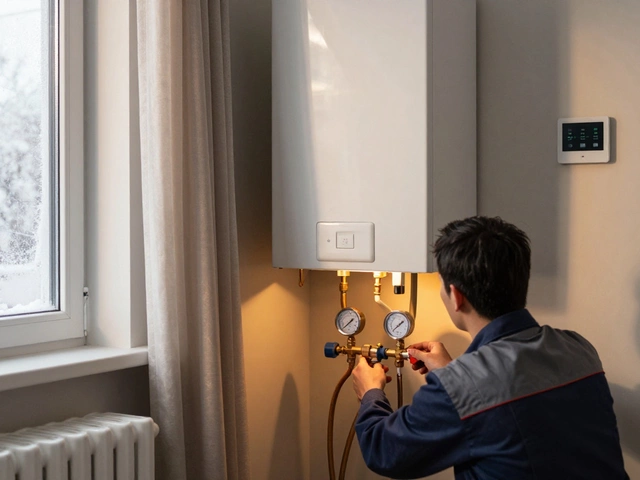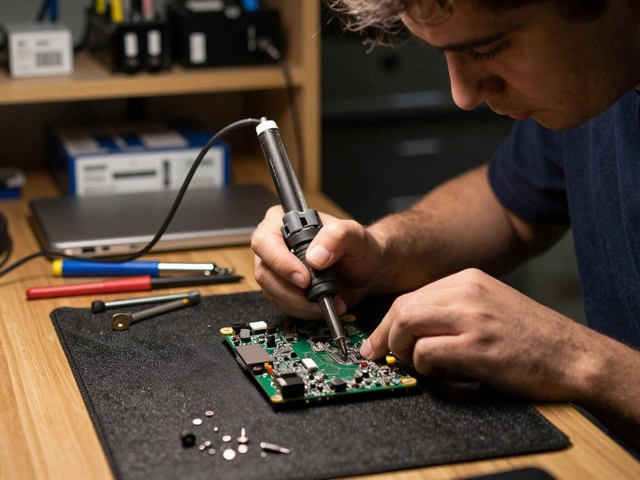Is your hob acting up? One ring won’t heat, or there’s a weird clicking noise you can’t ignore? Don’t write off the whole thing just yet—most hobs can be repaired instead of replaced. Knowing where to look can save you a lot of money and hassle.
Start by checking the obvious: sometimes it’s as simple as a tripped fuse or a bit of grime on the burners. If the whole hob is dead, make sure it’s plugged in properly and hasn’t blown a fuse. Electric hobs can suffer from worn-out switches, while gas hobs might only need the burners cleaned. You'd be surprised how many 'broken' hobs just need a deep clean or a swapped-out spark igniter.
But don’t just grab a screwdriver and hope for the best. Knowing which problems are fixable at home, and which need an expert, matters. Some fixes—like changing a faulty knob or cleaning a clogged jet—are a breeze. Issues inside the circuitry or with the gas line, though, are best left to the pros for safety’s sake.
Before you decide to replace your hob, make sure you know what’s really wrong. Sometimes a repair costs less than a dinner out, and gets your kitchen back in business faster than you'd think.
- Spotting the Signs Your Hob Needs Repair
- Which Hob Faults Can You Fix Yourself?
- When to Call in the Pros
- Parts—Replace or Repair?
- Keeping Your Hob in Good Shape
Spotting the Signs Your Hob Needs Repair
Your hob repair adventure starts by figuring out what’s actually wrong. Most folks can catch the signs early if you know what to look (and listen) for. Ignoring problems doesn’t make them go away; a small hiccup today can turn into a dead burner tomorrow.
Here are some dead giveaways:
- The burner won’t heat up, even on maximum. This is super common on electric and gas hobs. Usually, it points to a blown element, broken switch, or a dodgy connection.
- One or more rings heat unevenly. You’ll notice your pan has hot and cold spots, or the ring takes forever to get going. This might be a failing heating element or clogged gas jet.
- Sparking noises, clicks, or flashes. Electric ignition hobs should spark up, but if you hear this constantly (even when off), the switch could be stuck or wet.
- The control knobs don’t click, spin loosely, or just don’t do anything. Might be as simple as a worn-out knob, or a busted connection inside.
- The smell of gas. Never ignore this. Turn off the mains supply and call a gas engineer—seriously, don’t mess around with this one yourself.
- Error codes on digital controls. A modern electric hob repair might involve looking up what those codes mean. Some are simple fixes, like a sensor that got knocked, while others are trickier.
If you’re trying to decide if it’s a quick fix (like cleaning burners) or a bigger problem, here’s a cheat sheet—what most people report with problem hobs:
| Sign | Possible Cause | DIY or Pro? |
|---|---|---|
| Ring won’t heat | Element, fuse, switch failure | DIY for fuse/knob, Pro for element |
| Clicking noise | Spark switch stuck or wet | DIY if dry, Pro if persistent |
| Gas smell | Gas leak somewhere | Pro only |
| Error code | Sensor error, software glitch | DIY reset, Pro if code remains |
If any of this sounds familiar, it’s a good sign your hob is sending an SOS. Take these early signals seriously if you want to avoid bigger repair bills (or a new hob) down the road.
Which Hob Faults Can You Fix Yourself?
You might be surprised at how many hob repair jobs are pretty simple. Before you call an expert (and pay their call-out fee), there are a bunch of things you can tackle yourself with basic tools and a bit of care.
- Cleaning Dirty Burners: Most gas hobs stop working because food gunk blocks the gas flow. Just give the burners a good scrub with hot soapy water and a brush. Let them dry completely before you put them back.
- Replacing Broken Knobs: Knobs crack or stop turning all the time. Stores and online shops usually stock replacements. Just pull off the old one and fit the new one in place. Easy.
- Fixing a Stuck Igniter: If your gas hob won’t ignite, the igniter might just be dirty or out of place. Wipe it gently, check for obvious dirt, and pop it back in position if needed—just make sure everything is off and unplugged first.
- Addressing Loose Connections: Electric hobs sometimes develop loose wires on the terminals where the power connects. If you know a bit about electrics, check for wobbly connections—but only do this if you feel comfortable and always unplug first.
- Resetting Tripped Fuses: Electric models often have individual fuses or trip switches. If the entire unit dies, check your fuse box and the plug for blown fuses or resettable trips.
Here’s a quick look at the most common hob repair jobs that owners do themselves, and how often a pro is needed:
| Fault Type | DIY Fix (%) | Usually Needs a Pro (%) |
|---|---|---|
| Dirty Burners | 90% | 10% |
| Broken Knob | 85% | 15% |
| Igniter Not Clicking | 70% | 30% |
| Electric Not Working | 40% | 60% |
If it’s just simple stuff—bits that pop off or unscrew, or problems that are obviously down to dirt—give it a shot. If you’re ever in doubt or smell gas, though, walk away and call a professional. Nothing in hob repair is worth risking your safety over.
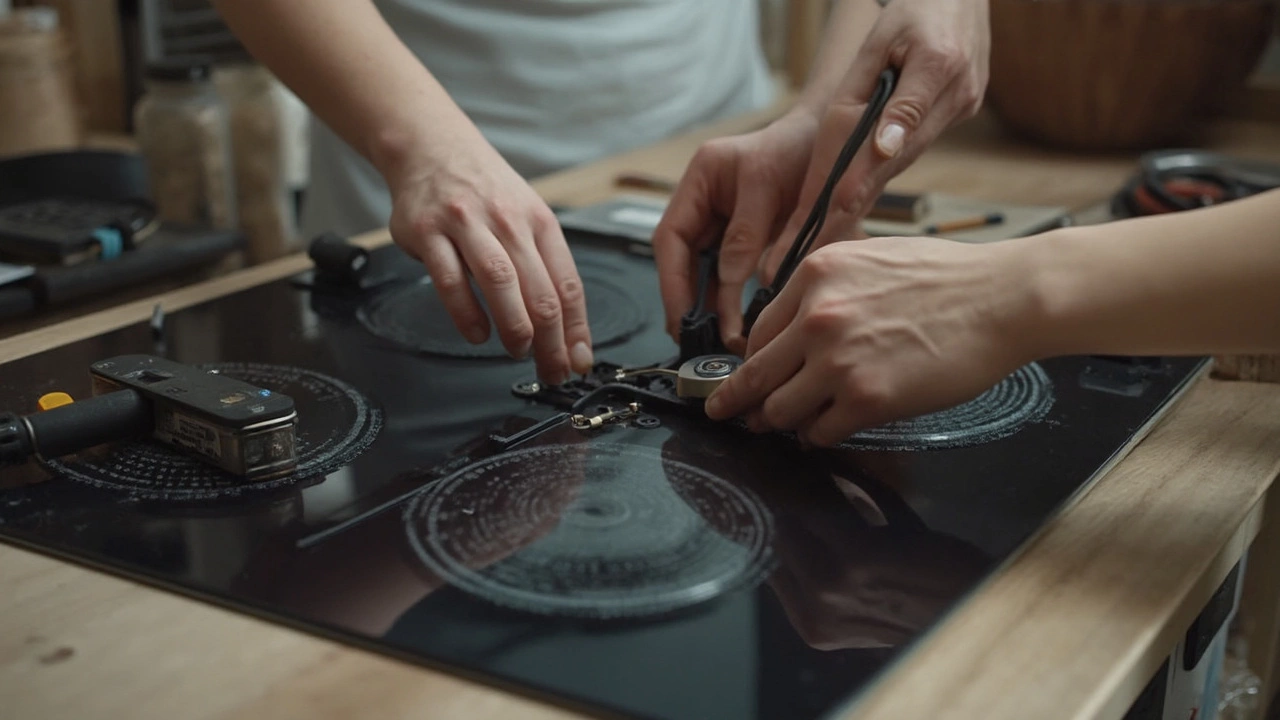
When to Call in the Pros
Sometimes, it just makes sense to call a certified technician when your hob repair needs get too tricky or risky. Not every problem is a DIY job, especially when you start dealing with things like electricity and gas.
Here’s when you should really leave it to someone who knows their stuff:
- Electrical issues: If your electric hob keeps tripping the circuit breaker, or you’ve got dead spots on the touchscreen, don’t poke around inside. Faulty wires, burnt-out relays, or blown internal fuses can cause shocks or even start a fire if you’re not careful.
- Gas leaks: Smell gas or hear hissing around your gas hob? Turn it off, open a window, and call a professional. Gas leaks are no joke—they can be dangerous, and UK law actually says only Gas Safe registered engineers can legally work on gas appliances.
- Broken glass tops: Cracks in ceramic or glass hobs aren’t just ugly—they’re not safe for cooking anymore. Replacing the whole top involves dealing with heavy, fragile parts and reconnecting all the burners underneath. It’s a pro job.
- Deep internal faults: Problems like a dead main control board, weird burning smells from inside, or hobs that heat way too much, all tend to point to parts you can’t see or reach easily. Most technicians fix these faults faster and get the right parts first time.
To help you see when professional help makes sense, check out this quick comparison:
| Problem | DIY? | Call a Pro? |
|---|---|---|
| Burner won’t spark | ✔️ | |
| Gas leak or smell | ✔️ | |
| Cracked glass top | ✔️ | |
| Stuck knob | ✔️ | |
| Hob trips fuse repeatedly | ✔️ | |
| General cleaning/blockage | ✔️ |
Don’t forget: hiring a registered engineer doesn’t just keep you safe, it can keep your warranty valid, too. And a good pro usually guarantees their work, so you don’t get stuck with the same hob headache twice.
Parts—Replace or Repair?
When it comes to hob repair, not every faulty part means a new hob. Some parts are quick, cheap fixes, while others signal it's time to call it quits or ring up a pro.
Let’s break it down. The most common parts that go bad on hobs are:
- Burners: If a burner’s not heating up or gas won’t flow, it’s often a dirt issue. A deep clean does the trick, but when the burner cap is cracked or warped, swapping the part is easier and faster than trying to fix it.
- Ignition switches: If your hob is clicking but not lighting, the spark module or igniter might be toast. These are replaceable and pretty affordable online—just check your hob’s model number first.
- Knobs: Broken or spinning knobs drive everyone nuts. Good news—replacement knobs are usually less than a tenner, and you just pop the old one off and snap on a new one. Done in a minute.
- Heating elements (for electric hobs): If one ring won’t heat, the element could be shot. You can usually find replacements, but if the wiring underneath looks damaged, it's a job for a pro.
If you’re not sure what’s wrong, look under the lid—literally. Most hobs have an accessible underside. But if you see melted wires, scorched connections, or leaking gas, get help. Messing with gas or electric lines yourself can be dangerous, not just for your hob but for your whole house.
Curious what’s usually worth fixing? Here’s a quick glance at the numbers:
| Hob Part | Typical Replacement Cost (£) | DIY? |
|---|---|---|
| Knob | 5–15 | Easy |
| Ignition Switch | 15–40 | Moderate |
| Burner Cap | 10–30 | Easy |
| Heating Element | 20–60 | Moderate/hard |
| Control Board | 50–150 | Usually Pro Only |
Long story short, a lot of broken hob issues come down to one small part. Before you throw in the towel, see if a simple swap or clean gets things back on track. Check your manual or model number before buying spares, and don’t be afraid to watch a quick online video for step-by-step fixes.

Keeping Your Hob in Good Shape
If you want to avoid hob repair bills, a little regular care goes a long way. Most problems don’t pop up out of the blue. They usually start as little issues—like a sticky knob or built-up grease—that then snowball when you ignore them. Here’s how you can keep things running without fuss.
- Wipe it down often. After every use, use a soft damp cloth and mild detergent to wipe your hob. Leaving spills to dry will make them a pain to clean and can actually cause burner issues, especially if you’ve got a gas hob.
- Keep burners and rings clean. Don’t let food or grease clog up the burners. With electric hobs, built-up gunk can stop the heating element from making proper contact. For gas hobs, blocked jets can mess with the flame. Remove burners if your model lets you and soak them for a few minutes every now and then.
- Check your power and gas connections. Every so often, make sure the cord is not frayed (for electric hobs) or that you don’t smell gas leaks. If something seems off, get it checked fast. Safety's not worth gambling.
- Inspect knobs and controls. Sticky switches or loose knobs are not just annoying—they can actually cause more serious problems down the line. Swap them out as soon as they show wear. Good news? Replacement knobs are cheap and easy to get.
- Don’t ignore weird noises or smells. Clicking sounds, erratic flames, or burning smells mean something’s not right. Quick action can save you a big hob repair job later.
Here’s something that might surprise you: nearly 60% of hob repair callouts in the UK are due to poor cleaning habits, not actual breakdowns. Check out this quick hit of what owners say triggers the most fixes:
| Common Issue | % of Repair Callouts |
|---|---|
| Burners not lighting | 38% |
| Tripped electrics | 15% |
| Uneven flame or heating | 27% |
| Broken knobs | 10% |
| Gas leak or smell | 10% |
The bottom line? A quick wipe, the occasional deep clean, and a tiny bit of attention can keep your hob running smoothly. Most fixes start with simple habits.


